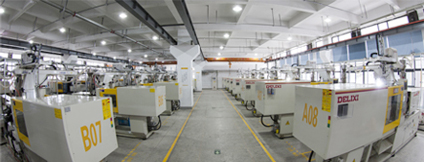Hangzhou Delixi Group Co.,Ltd.
Featured News
The use of flexible LED strip lights is rapidly rising in modern lighting design around the world. Architects and lighting designers are implementing LED strip lights into residential, commercial, and industrial projects at an increasing rate. This is due to an increase in efficiency, color options, brightness, and ease of installation. A homeowner can now design like a lighting professional with a complete lighting kit and an hour or two.
There are many options on the market for LED strip lights (also called LED tape lights or LED ribbon lights) and there is no clear-cut standard for how to choose LED strip lights. We have created this guide to educate experts and newcomers alike.
1. Compare Lumen and CRI (Color Rendering Index)
Lumen (Brightness to the human eye)
This is the most important variable when choosing which LED strip light you need. Comparing lumen output from strip to strip is important. It is also important to note that there are different ways of saying the same thing.
The questions you should be asking is “Lumens per what? Per foot, meter, or reel? How long is the reel?”
Different projects require a certain amount of brightness to achieve a desired look. Below is a general guide. We are always available to help design your project with you.
2. Compare LED strip size and number of LEDs on the strip
Traditionally, LED strip lights are packaged on a reel (spool) of 5 meters, or 16' 5''. The machines used to "pick and place" the LEDs and resistors on the flexible circuit board are typically 3' 2'' in length, so individual sections are soldered together to complete a whole reel. If purchasing, make sure you are purchasing by the foot or by the reel. Confirm length before checking out.
Measure how many feet you need of LED strips before you start. This will make it easier to compare price (after quality is compared, of course). Once you determine the number of feet on the reel being sold, look at how many LED chips are on the reel and the LED chip type. This can be used to compare LED strips between companies.
3. Wattage consumed per strip of LEDs
Power consumption is one of the reasons we as a society have begun switching to LEDs. Wattage tells us how much power we are consuming while these lights are on, and in turn how much we’ll have to pay at the end of each month. Once again, be sure to verify the wattage per foot, meter, or reel before you buy.
Some may read “24 watts” on a reel and then get home and realize this is per meter or per foot, meaning the whole reel actually uses much more. Making matters worse, they have bought a power supply that covers 30 watts, thinking that would be enough. This often occurs when a seller doesn’t properly list important information in an easy to read format.
Finally, make sure you understand the voltage that your flexible LED strip lights use. An LED strip light that uses 24 volts will not work if you purchase a 12-volt power supply, and also may result in risk of fire. You need to choose the correct power unit for your lights.
4. Verifiable Quality
You are looking for a "set-and-forget" lighting system that can be used for years to come. To make sure that your LEDs last their intended lifespan, are safe around your home and business, and don't require extra maintenance costs to replace, you need to verify the quality claims.
- Thermal Management - Heat = death to LEDs. Ask if and how the LED strip lights have been designed for proper thermal management and heat dissipation. If they have not, the LED's 50,000+ hour LED chip life span may drop to 10,000 or 20,000 hours. This can be done on a chip level and on a PCB level. Do not solely rely on an aluminum heat sink to dissipate heat away from the LEDs. The product should be designed at a component level to ensure a longer lifespan.
- Color Quality and Accuracy - When you purchase a 'warm white' producing LED strip light you should not expect to get a bright white color from the LEDs. Ask for test reports that prove the color you are purchasing is what will arrive.
- Safety Certifications -It is difficult to verify a seller’s safety claims using Amazon or Ebay alone. Check the UL listing or RoHS registry to make sure the LEDs are safe and do not contain lead or other hazardous materials.
- Material Quality - Product performance and longevity is determined not just by the quality of the LEDs, but the thickness and materials used in the PCB, resistors, wires, and lead-free soldering.
- Test Reports - Ask for test reports to verify claims of brightness and longevity. These may include LM-79 testing, IES reports, etc.
- Warranty, Customer Service, and Installation/Design Assistance - We are here to help design your project, no matter what the size. Our LED strip lights represent the highest quality found on the market today, and will be lighting your project area for many years to come.
This article comes from flexfireleds edit released

The IoE Ushers in Opportunity for The Last Product Recall
In our consumer-centric society, product recall announcements grab headlines and...
 86 - 571 - 85221566
86 - 571 - 85221566
 Login/Register
Login/Register

